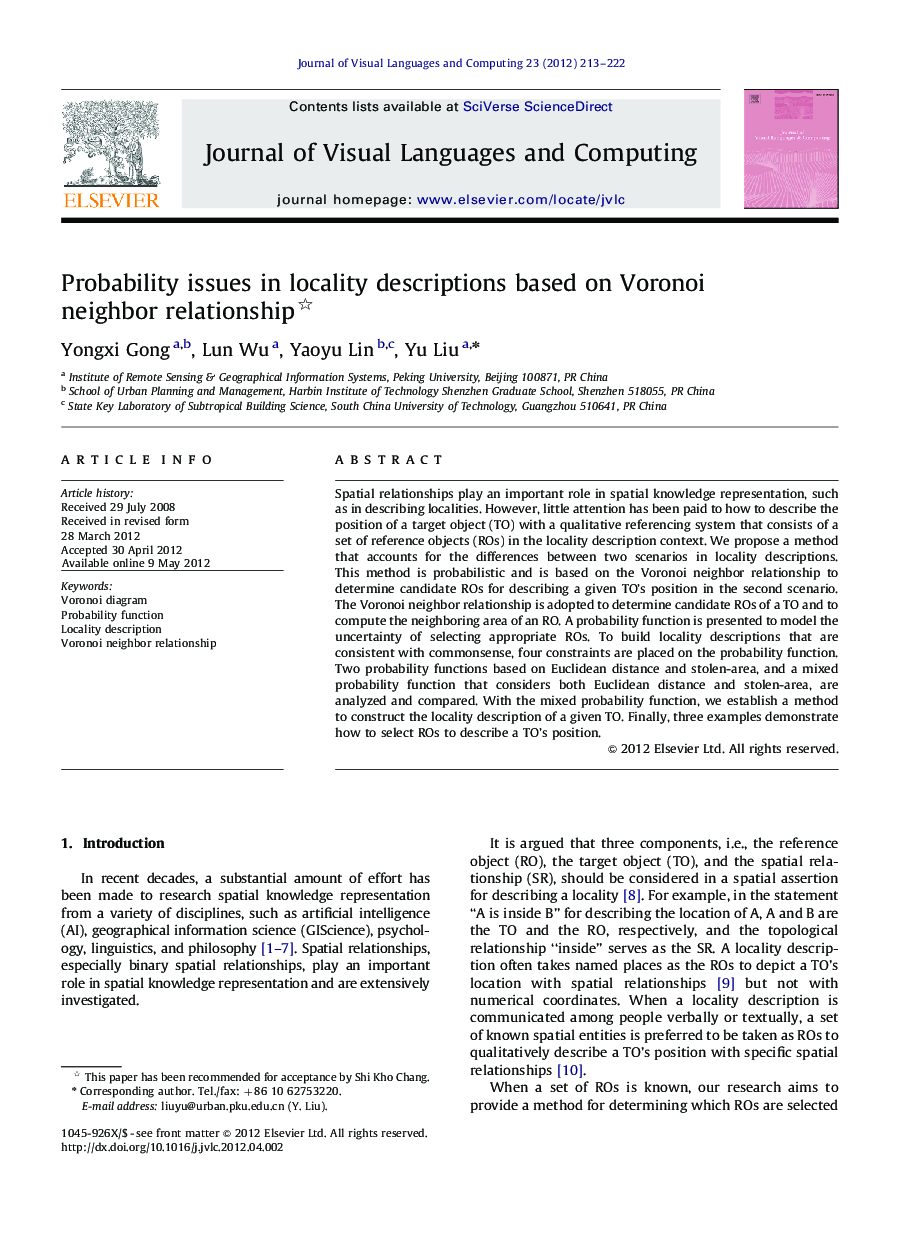| Article ID | Journal | Published Year | Pages | File Type |
|---|---|---|---|---|
| 523510 | Journal of Visual Languages & Computing | 2012 | 10 Pages |
Spatial relationships play an important role in spatial knowledge representation, such as in describing localities. However, little attention has been paid to how to describe the position of a target object (TO) with a qualitative referencing system that consists of a set of reference objects (ROs) in the locality description context. We propose a method that accounts for the differences between two scenarios in locality descriptions. This method is probabilistic and is based on the Voronoi neighbor relationship to determine candidate ROs for describing a given TO's position in the second scenario. The Voronoi neighbor relationship is adopted to determine candidate ROs of a TO and to compute the neighboring area of an RO. A probability function is presented to model the uncertainty of selecting appropriate ROs. To build locality descriptions that are consistent with commonsense, four constraints are placed on the probability function. Two probability functions based on Euclidean distance and stolen-area, and a mixed probability function that considers both Euclidean distance and stolen-area, are analyzed and compared. With the mixed probability function, we establish a method to construct the locality description of a given TO. Finally, three examples demonstrate how to select ROs to describe a TO's position.
► We propose a probabilistic method based on the Voronoi neighbor relationship to build locality description in Scenario II. ► Voronoi neighbor relationship is adopted to determine candidate ROs associated with a given TO. ► Probability function is presented to model the uncertainty of selecting appropriate ROs with four constraints. ► A minimum set of ROs in which the sum of probabilities is greater than a threshold is used to build the locality description. ► Three examples demonstrate how to select ROs to describe a given TO's location.
